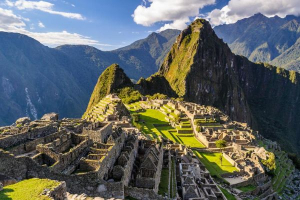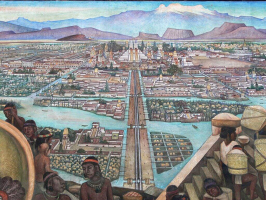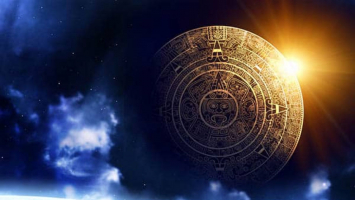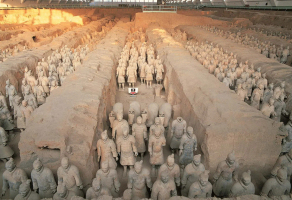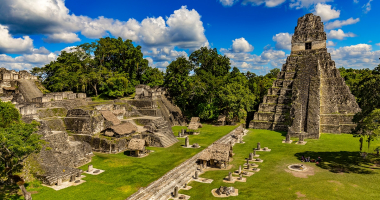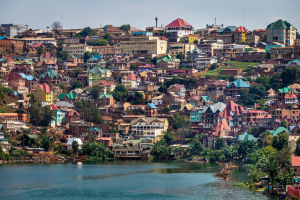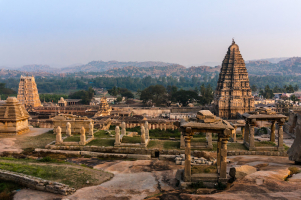Top 10 Bizarre Geological Features of the Earth
There are several geological mysteries on Earth. There are many strange and fascinating natural formations because of how many different types of terrain and ... read more...ecosystems there are on the earth. Some of them are so peculiar that they might as well be found on an alien planet with totally unrelated environmental factors. These bizarre geological features of the Earth are not only fantastic tourist destinations, but they also provide a window into the planet's dynamic and swiftly changing past.
-
According to standard scientific and evolutionary theory, life should become more scarce in the extreme parts of the world. Growing evidence over the last few decades, however, suggests the exact opposite. Life, it seems, is more diversified and thriving there than in most other places people are aware of, not just existing in what is considered unfriendly conditions.
Simply consider hydrothermal vents. These vents in the ocean floor, which emit a vast range of chemicals and minerals, are typically found close to active volcanoes. Many creatures that depend on the heat for survival use them as a source of energy because they also create a lot of it. An emerging school of evolutionary research contends that hydrothermal vents in the oceans, not space, are where life first appeared.
Although hydrothermal vents are unquestionably among the most fascinating geological structures on Earth, little is known about them, and people continue to discover brand-new vents with brand-new colonies of bacteria that people have never seen before.
Owner: Woods Hole Oceanographic Institution via Youtube Owner: Natural World Facts via Youtube -
If you travel to the southwest part of Denizli province in Turkey, you’ll find a distinct structure dominating the landscape. Pamukkale is a complex of seventeen naturally occurring thermal pools constructed in the shape of steps on the slope of a steep hill. Pamukkale is Turkish meaning "cotton castle." The temperature of a pool can fluctuate from a comfortable 95 degrees to boiling. The "cotton" component of their name refers to their pristine white tone, which makes them sparkle under the right lighting.
The "cotton castle," though it appears to be man-made, is actually the result of thousands, even millions, of years of natural geological processes, which makes it to be one of the most bizarre geological features of the Earth. A significant amount of calcium carbonate is left behind as the hot spring water retreats. Travertine is a white stone that hardens over time and gives Pamukkale its distinctive appearance.
Pamukkale was a holy city called Hierapolis long before it was a cotton fortress. Ancient Greek remains that date back more than 2,000 years surround the stunning waters. Additionally, there are rumors of odd, occasionally sinister tales buried within the ruins of that city.Location: Denizli Province, Turkey
Owner: Sammy and Tommy via Youtube 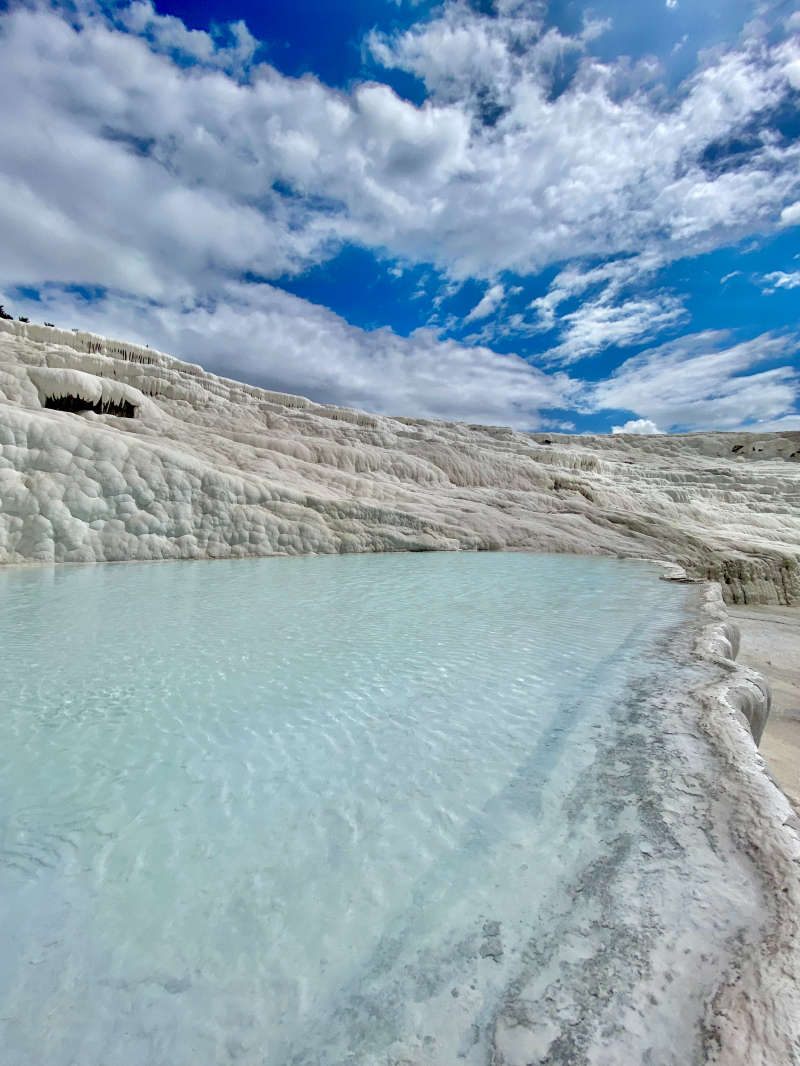
Photo by Kubilay Bal via Unplash -
Turkmenistan's Karakum desert is a sparsely populated area, primarily because of its harsh climate. It is famous for the Darwaza gas crater, which was given that name in honor of a local settlement. The crater is also referred to by the locals as The Gate To Hell, and for a worthy cause. Due to all the trapped gas that is still there underground, it is around 230 feet wide and has been burning for more than 50 years.
Soviet drilling equipment accidentally drilled through a natural gas cavern in 1971, creating the hole. As a result, the entire drilling operation collapsed along with the ground. The oilfield operators made the decision to light them on fire and let them burn out in order to close the hole and stop harmful games from further polluting the environment. That idea, as you can see, didn't quite work out because they greatly overestimated the amount of gas present in that hole. Since then, the pit has been constantly on fire.
Location: Darvaza, Turkmenistan
Owner: BBC Reel via Youtube Owner: Global News via Youtube -
The Chihuahua, Mexico, region has been a mining hotspot because of its metal reserves since the early 19th century, and the Cave of Crystals was initially found in 1910 during a mining dig. It was known as one of the bizarre geological features of the Earth since a long time ago and was the Cave of Swords back then because it contained enormous, three-foot-long gypsum crystals that weren't found anyplace else at the time.
But in 2000, a team of miners discovered a different, much larger network of caverns close by. Gypsum crystals in this location can grow up to 40 feet long and three feet wide, and people have no idea if there are any deeper caves with crystals that are even larger. Due to the intense seismic activity in the area, these crystals only formed after countless years of mineral-rich waters seeping into the caves. This enables the accumulation of calcium sulfate, which then combines with different elements to generate a variety of minerals, including gypsum. The caverns draw specialists from all over the world, including crystallographers and geologists, due to their numerous distinctive geological features.
Location: Naica, Chih., Mexico
Owner: TOP BOX TV via Youtube Owner: BBC Reel via Youtube -
A geological depression caused by the continental drift of three tectonic plates, the Danakil Depression is one of Earth's most unusual environments. Renowned as the 'hottest place on the planet' and home to salt lakes, lava lakes, volcanoes, and colorful acidic springs - it's a wonderful, alien environment.
The Danakil Depression is home to some of the most fascinating geological structures on the planet. Since the Red Sea pours over into the rift, creating a new ocean that divides the African continent in two, the Danakil is a new ocean basin, which means that millions of years from now, the Danakil will be covered in water.
Lying a bit over 330 feet below sea level, it’s one of the world’s lowest and most inhospitable environments. The landscape is dotted with numerous acidic ponds and geysers, along with two highly active volcanoes that occasionally spew ash into the air to complete the ‘apocalypse’ look.
The Danakil Depression remains an active site for biologists and other researchers. The acid pond and lakes are, surprisingly, teeming with an array of microorganisms not found anywhere else on Earth.
Location: Afar region, Ethiopia
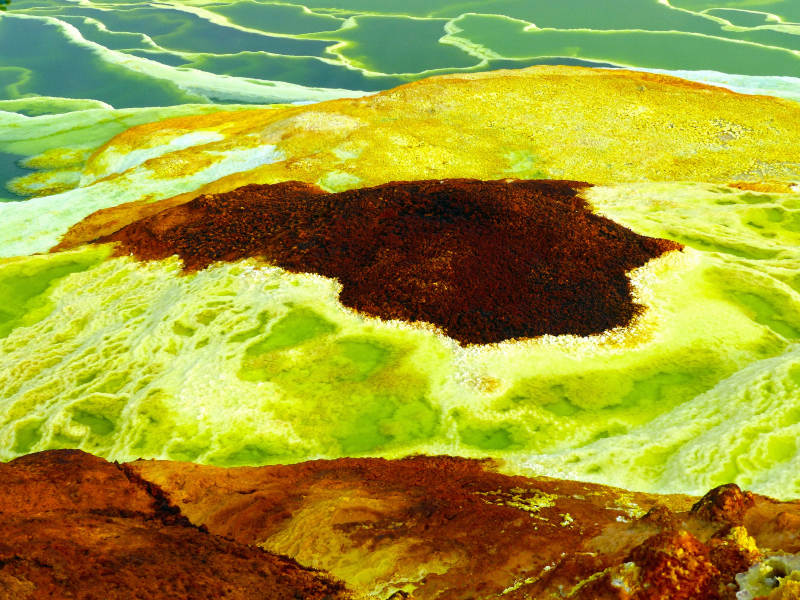
Photo by Atypeek Dgn via Pexels 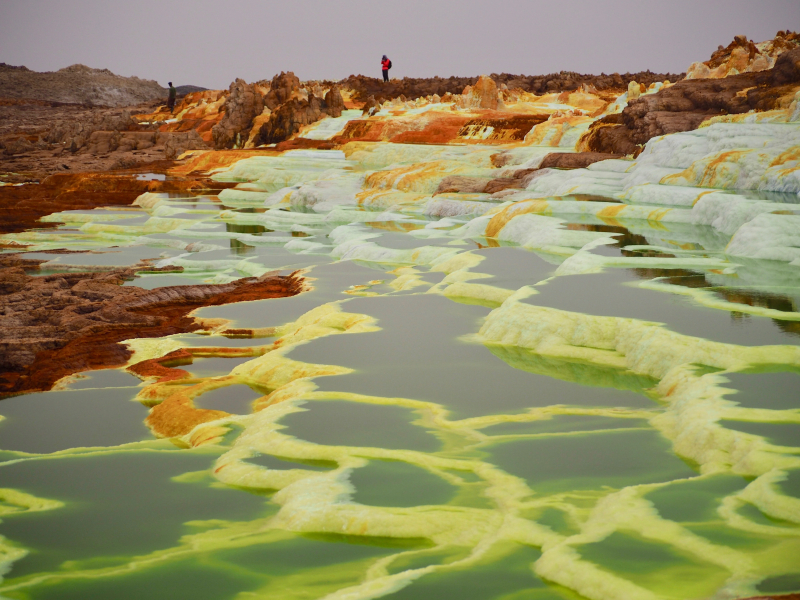
Photo by Jorge Tung via Unplash -
Fly Geyser falls inside a private property called the Fly Ranch in Nevada. There are several geysers of all sizes and forms in the area known as the Hualapai Geothermal Flats, but this one stands out due to its unusual appearance. It is a large, brightly colored, almost comical edifice constructed of cones that protrude from the Earth and have numerous streams of hot springs gushing out of them. Even though it is almost entirely man-made, it appears to be something from an extraordinary space fantasy movie.
The geyser was artificially made in 1916 for agricultural operations, though its water was found to be unsuitable. When nearby geysers were discovered that were superior, it was abandoned. The water continued to find a way to the surface even if the geyser was still formally cut off. Calcium carbonate, which was deposited at the site as a result of the water's high mineral content, eventually grew into a vibrant, 10–12 foot tall cone.
Then, in 1964, a drilling business made the decision to dig there for hot water, but once more, it was determined that it was inappropriate. Although there were many more fresh vacancies than previously, the site was abandoned. Numerous new cones at the location have improved the structure's appearance throughout the years, and it appears that the process is still ongoing.Location: Nevada, The United States
Owner: Earth Titan via Youtube Owner: I Bare It All via Youtube -
There are many strange geological formations in Antarctica. Researchers have discovered a number of natural formations that are exclusive to the continent in recent years as the ice cover melts as a result of rising temperatures. But Blood Falls is probably the most shocking of them all.
Blood Falls are exactly what you're imagining them to be: a natural creation that resembles a waterfall of blood. They're found in a glacier called the Taylor Glacier. Although that might seem strange, the explanation is stranger. According to studies, the color is produced by bacteria that break down organic debris and transform ferric iron into its soluble form in an ancient lake that is buried beneath the glacier. They belong to a distinct, little-understood class of creatures that depend on sulfates for survival instead of oxygen since they had to develop in an environment without any light or oxygen. Keep reading to find out more bizarre geological features of the Earth.
Location: McMurdo Dry Valleys, Victoria Land, East Antarctica
Owner: PBS Terra via Youtube Owner: GeologyHub via Youtube -
From afar, the Kelimutu volcano in Indonesia looks like any other one of the many volcanoes found across the region. Aside from the three lakes that are located inside its crater, it is also. They appear at first glance to be typical lakes that gradually grew within the mouth of a volcano. If you observed them over time, though, you’d see that their color changes almost consistently, and in no discernible pattern.
Satellite photos captured over time show that the colors range from diverse white tints to turquoise blue and blood red. As seen in the picture below, Kelimutu features three summit crater lakes. Blue is frequently the color of Tiwi Ata Mbupu Lake. Tiwu Nua Muri Kooh Tai and Tiwu Ata Polo are usually green and red, respectively, and they share a common crater wall.
Fumaroles, which are volcanic vents that continuously spew minerals and gases into the lakes, are the cause of the shifting colors. Although the volcano has never been consistently examined due to the remoteness of the area, there may be some microbiological processes engaged in the process as well.Location: Flores island, Indonesia
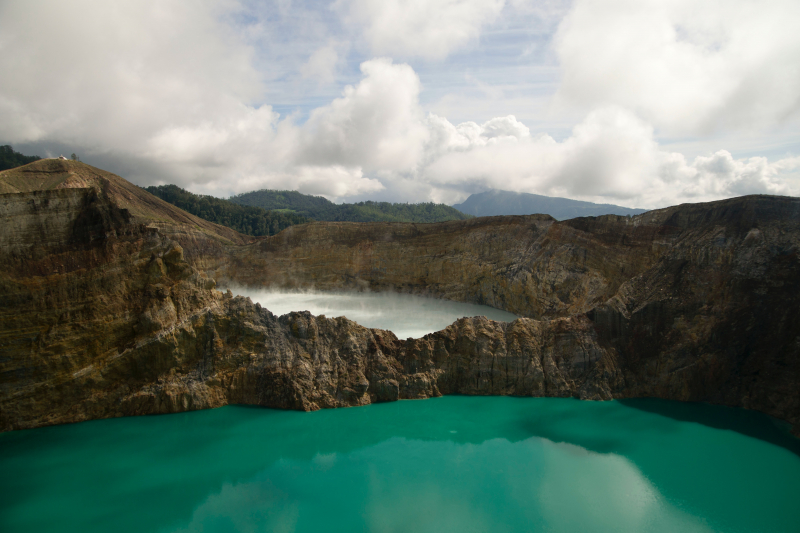
Photo by Pierre-Yves Burgi via Unplash Owner: Amazing Places on Our Planet via Youtube -
You’ve heard about the Earth opening up and swallowing entire swathes of land in both apocalyptic fiction and academic climate change reports. In the Yamal Peninsula in Siberia, though, exactly that seems to have been happening for the past few years.
The huge hole, which is at least the ninth to have been discovered in the area since 2013, is not fully understood by scientists. When the first crater was found in the Yamal Peninsula in northwest Siberia close to an oil and gas field, initial hypotheses included a meteorite impact, a UFO landing, and the collapse of a covert subterranean military storage facility.
When a 2017 study counted more than 7,000 of them spread across the terrain, scientists had only found roughly 15 of them as of 2016. They are a result of methane and other greenhouse gases that are trapped beneath the permafrost. Over time, as it becomes weaker and thinner, the gases have an easier time escaping, leaving behind enormous, potentially fatal sinkholes.
Location: Yamal Peninsula, Siberia
Owner: BBC Reel via Youtube Owner: Future Unity via Youtube -
The Bolton Strid is a picturesque stretch of river that resembles the kind of location where fairies might be seen playing in the heath. But a natural booby trap that has claimed a number of lives is lurking just below the surface. The Bolton Strid in Yorkshire, England doesn't appear particularly intimidating at first glance. It doesn't even seem like anything because it's simple to ignore it as a little, easily-crossable stream of water while out for a stroll in the English countryside. But if you attempt to cross it, it might be the last stream you ever cross without carefully inspecting what's inside.
In reality, the Bolton Strid is a huge river that has been flipped on its side. It is hard to escape once you enter the supposedly innocent brook's vast depths, which include extensive networks of enormous tunnels. According to local legend, the brook has had a 100% kill rate over the years, making it perhaps one of the most dangerous places in the world.
Location: Yorkshire, England
Owner: jack a snacks via Youtube Owner: Tom Scott via Youtube













